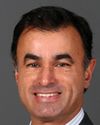Every year, when we hold our merit boards--which are words to mean that a group of individuals at the appropriate rank level come into a room and look at the files for every occupation in the Canadian Forces.... That's infantry, armoured, and artillery at every rank level. We have hundreds of these. They run annually, from September until the end of November. They then produce a merit list. That is the list that is used to promote people every year in the Canadian military in the regular force.
In the merit system, producing that list is actually done electronically, to give you a little bit of detail. Files are scored based on a number of factors--on leadership, on education, on official language requirements, and on backgrounds. People are allocated scores, the scores come out, and the people with the highest scores obviously are higher on the list. But at the end of it all, a merit board produces a list that goes from one to the number of people within a trade or occupation across the Canadian Forces.
At the end of November, we take a look at who is leaving the Canadian Forces, who is retiring. Then we contact those on the list and say, for instance, “In all likelihood, you could be promoted this year, because we have three people leaving, and you're numbers one, two, and three on the list.”
It's very open, very transparent, and happens every year in the Canadian Forces. It's probably done nowhere across any government in this detail to ensure that the right people are promoted with the right skills and qualifications for future positions.
We then also ask the chain of command, those who are in charge of the units, to write.... Every year you get a PER, a piece of paper that describes how you did over the last year in a number of areas. As well, the chain of command comments on your future potential.
So when you take a look at career progression, it's based on two components: one is your performance and one is your potential. They come together to produce that list, from which we determine who is promoted.
On the class B side--that's the regular force--the overall career management for class B is still held within the army, the navy, the air force. I don't control that, as the chief of military personnel.
I personally believe...and the Chief of the Defence Staff and I have talked about this. We'd like to move to a more centralized approach on the career management of reservists so that it moves out of the army, navy, air force and is held centrally by the chief of military personnel. I can then apply, as noted in those questions, those same processes and approaches that we have for the regular force today.




